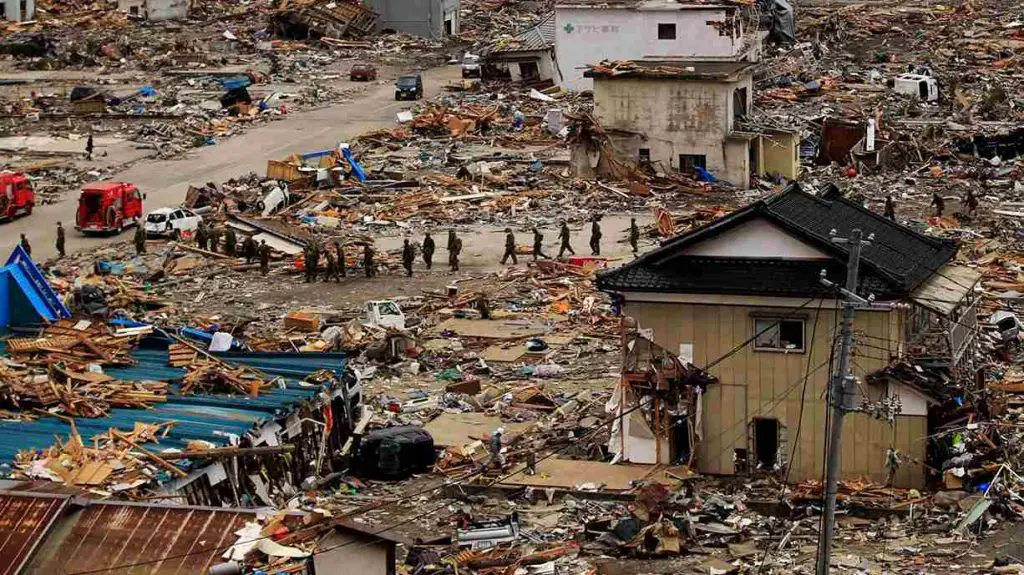Earthquakes are generally not considered to be especially destructive forces of nature. Sure, they can lead to destruction and loss of life, but they’re not exactly capable of tearing the planet apart. So, how much force would it take for an earthquake to actually have the ability to destroy the earth?
If you’ve ever visited an earthquake simulator, such as the one at Imax theaters or any other museum that has a display that shakes from side to side, you know that there’s no way anyone could build something sturdy enough to resist the shaking and keep from collapsing. Theoretically speaking, if an earthquake were powerful enough it would theoretically be capable of destroying the Earth.
Of course, nothing we know about physics suggests this is possible. An earthquake large enough to destroy the Earth would need to be so strong that its force alone could rip apart solid ground as well as tectonic plates; a force great enough to pulverize rock into tiny particles, and maybe even tear away pieces of land large enough that they wouldn’t fall back into place after being moved. Read on to learn more about how big an earthquake would need to be in order to destroy the Earth.

How Big Would an Earthquake Need to Be to Destroy the Earth?
The short answer is that an earthquake would need to be able to produce a seismic force equivalent to the force that holds the Earth together. Since we know that the Earth is held together by the force of gravity, an earthquake would need to be capable of generating enough energy to counteract the pull of gravity and tear the planet apart.
Let’s imagine that there was an earthquake so powerful that it was able to generate enough energy to tear the planet into pieces. The first question that comes to mind is how this destruction would happen. Would it be similar to the way a tornado shreds buildings, or would it be more like a bomb going off? To answer this question, let’s look at the surface of the Earth and the forces that keep it from coming apart.
The Earth’s surface is essentially held together by the force of gravity. Gravity is the force that pulls planets and stars together. In the case of the Earth, gravity pulls all of the pieces of the planet toward the center. If the Earth’s gravity wasn’t strong enough to hold the planet together, then all of the different pieces would simply fall apart into space.
Is It Even Possible for an Earthquake to Destroy the World?
Although earthquakes don’t have the energy or force needed to tear the planet apart, they can cause significant damage to the surrounding area. In fact, an earthquake in China in 1556 is thought to have killed an estimated 8 million people. An earthquake capable of destroying the entire planet would need to be so powerful that it would cause a significant amount of damage to the entire world.
A great analogy for this would be wildfire. A wildfire burning in one forest can easily spread to nearby forests. The same would happen with an earthquake. Earthquakes have the potential to cause significant damage on a global level, but they don’t have the ability to actually destroy the planet.
A Simple Calculation Shows That It Is Impossible for an Earthquake to Destroy the Earth.
One of the best ways to determine if something is possible is to do a simple calculation. To do this, we’ll start by breaking down the Earth into its basic components. The Earth is made up of two main parts. The core is a solid ball of iron and nickel. The mantle is a thick layer of semi-molten rock that’s around 2,900km (1,800 miles) thick.
The crust is the thin layer on top of the mantle that’s around 30km (19 miles) thick. The force that would be needed to break apart the Earth and tear it into pieces would be equal to the force that holds the Earth together. In this case, the force that keeps the planet together is the force of gravity.
Could an Earthquake Cause a Tsunami?
Earthquakes aren’t powerful enough to cause tsunamis. In fact, they don’t have enough energy to disrupt the ocean in any significant way. They don’t have the power to move water to any significant height, nor do they raise the sea level. Earthquakes are caused by sudden shifts in the movement of tectonic plates. When two tectonic plates are pushed against one another, they can be forced to move.
This causes the plates to suddenly shift, and this sudden change in their position causes an earthquake. Earthquakes don’t have the force or energy to cause tsunamis, but they are capable of causing damage to buildings and nearby infrastructure. Earthquakes are often followed by tsunamis, but they’re not the cause of a tsunami.
An earthquake would have to be so strong that it could rupture the tectonic plates and cause one or more of them to be pushed below the ocean. If this were to happen, the weight of the water would cause the plates to suddenly sink.
Summing Up
Earthquakes are generally not considered to be destructive forces of nature. Sure, they can lead to destruction and loss of life, but they’re not exactly capable of tearing the planet apart. So, how much force would it take for an earthquake to actually have the ability to destroy the earth? An earthquake powerful enough to destroy the Earth would need to be capable of generating enough force to tear apart the entire planet.
Although this sounds like a daunting task, it’s actually impossible. The Earth is simply too strong, and it produces too much energy to ever be torn apart by the force of an earthquake.
Additional Contents:
